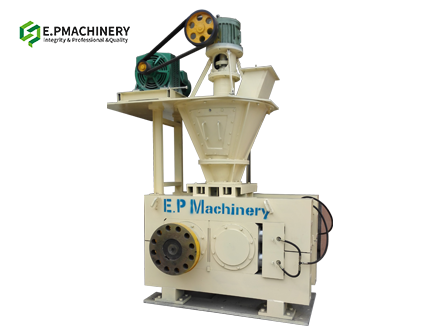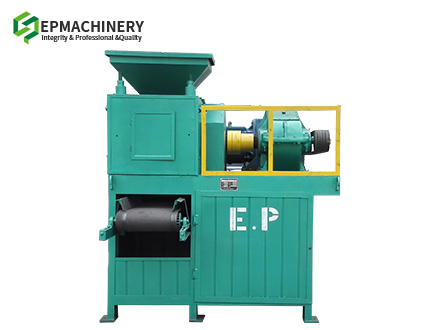
Coal briquette binders is used to help form the coal dust to briquette. Binders help the coal briquette making with lower pressure and higher quality.
Choose a proper binder is a very important factor in coal briquette making. As the large amount of coal dust generated every year, the key point on the binder of coal briquetting process is with low price and high performance.
Contents
The basic requirement of coal briquette binders
Basic binder requirement should be according to local suitable to take such measures as one suitable to local conditions.
- 1)、Can be obtained locally or nearly;
- 2)、With wide source
- 3)、Low cost
- 4)、With a simple process
- 5)、Finished briquette with high quality
- 6)、With reasonable price
Additives can be added to the coal dust with size small enough, also they can be added together with the binder (mixed).

Performance and characteristics of binder types
Main coal binders can be classified into 3 types – organic, inorganic and composite.
Organic
The organic binder is good in bonding property, finish coal briquette with high strength, but the thermal strength and thermal stability of briquette are poor, and some binders have poor water resistance.
Inorganic
The inorganic binder has a wide source and lower in cost, and the coal briquette has a good thermal strength and thermal stability, but it will increase the ash content of the briquette and reduces the calorific value.
Composite
The complementary properties of the materials mixed by the composite adhesive are the development direction of the binders.
Binders example
Organic
Coal tar pitch, coal tar, and petroleum asphalt and their residues. There are also high molecular polymers, starch, vegetable oil residue, animal glue, industrial waste, humate, lignocellulose, etc.
Inorganic
Clay, bentonite, kaolin, cement, water glass, raw (cooked) lime, calcium carbide mud, phosphate, sulfate, etc.
Composite
Organic and inorganic binders, each with their own distinct characteristics, can complement each other. When preparing the binder, any two kinds of binders can be blended and used, which are called composite binder, such as organic-organic binder composite binder, organic-inorganic composite binder, inorganic-inorganic composite binder. These types of binder can be work with better performance compared to one single binder.
Examples of coal composite binders: Humic acid + clay; Sodium silicate + clay; etc.
Binder rate and the coal briquette quality
Generally, the more the binder added to the coal dust, the higher the strength of the briquette.
However, in order to reduce the briquette plant cost, binder adding should be lower as long as the quality of the coal briquette is qualified.
The amount of binder added depends on the type of coal used and the type of binder selected. Some coals have a certain degree of cohesiveness which can be briquette with little or no binder.
Normal binder rate on coal briquette making is between 4%-10%, the lime rate for carbonized coal ball briquette is between 20% and 25%.

some types of coal can briquette with the binder free way
Adhesive effect and additives of coal briquette
-
1.Reduce the emission of sulfur dioxide – sulfur fixation
The simplest way of sulfur fixation is to add quicklime (calcium oxide) to the coal dust as a sulfur-fixing agent during the batching.
There are various kinds of calcium-based materials that can be used as sulfur-fixing agents, such as limestone, dolomite, quicklime, slaked lime, calcium carbide slag, and white mud.
-
2.Improve the cold strength of the coal briquette
The method of increasing the cold strength is to add the organic binder such as petroleum pitch, high molecular polymer, vegetable oil residue, animal glue, etc. in coal briquette making.
-
3.Improve the thermal strength
The practice has shown that the addition of bentonite, clay shale, clay, kaolin, etc. to the binder can enhance the heat strength of coal briquette.
-
4.Improve the thermal stability
To control the moisture in the coal briquette, especially the internal moisture of the raw coal dust. Total moisture in the coal briquette should be kept at 3-4%.
If the moisture is too high. When the temperature rises, the briquette will burst or break.
-
5.Improve the wet strength
The way to improve the wet strength of coal briquettes is to add a waterproofing substance such as water glass, cement, kaolin, etc.
-
6.Increase the calorific value of the coal briquette
The calorific value of briquette is derived from the carbonization age and fixed carbon content of the raw coal dust. Anthracite has the longest carbonization age and the highest fixed carbon content, which is the preferred additive to increase the calorific value of briquette.
-
7.Fast fire, save coal, reduce carbon emissions
If an appropriate amount of potassium nitrate, potassium chlorate or the like is added to the binder to increase the burning strength of the briquette, the furnace temperature (100 to 200 ° C) is rapidly increased, coal consumption (15%) is saved, and carbon emissions are reduced (20 to 40%).






